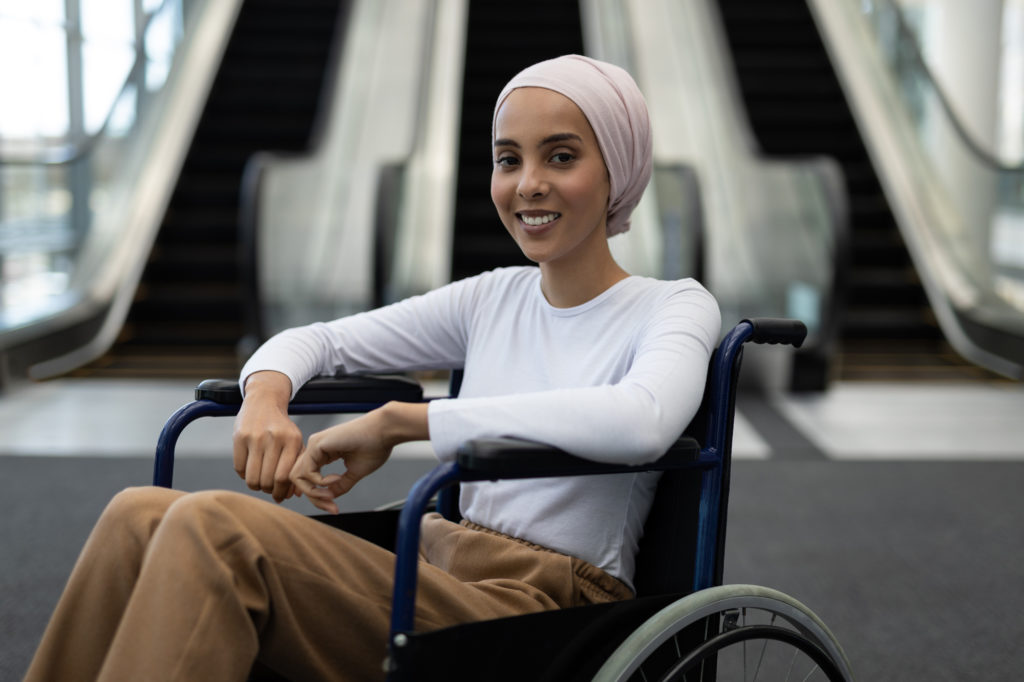03 Jan Planning an Inclusive Event – It’s All About the Details
It should go without saying that event professionals work to create experiences that meet the needs of all participants. But what does it really mean to be inclusive, and how can event designers be sure that everyone feels welcome?
It comes down to considering what matters to the individual. Whether it’s gender orientation, race, culture, religion, physical ability, dietary needs, or something else, there are many factors to consider to ensure that no one becomes marginalized.

Things to Consider when Planning a Truly Inclusive Event
Determine your audience
As with so many aspects of event planning, step one is to make sure you know your audience. Who is coming to the event, and to what degree can you anticipate their needs? Whoever your audience is, be sure that your message speaks to them from the start. From e-invites to social media postings, announcements about your event should include details that let potential participants know they will be welcome and accommodated.
Address the individual
In a world where gender fluidity is becoming more commonplace, avoid mis-gendering people by using their preferred pronouns. Be aware that some people prefer pronouns beyond “he” and “she.” Familiarize yourself with non-gender-specific alternatives: for example, ze/hir/hirs, with ze (pronounced “zee”) for she/he/they, and “hir,” (pronounced “here”) for her/ him/them.
One way to help create an inclusive environment for all genders is to use pronoun stickers at your event. Pronoun stickers are basically nametags with gender identification labels. With pronoun stickers, you can remove some gender barriers by helping event participants self-identify or be more comfortable in addressing whomever they’re speaking to.
Address everyone
Another simple way to promote gender inclusivity is to remind announcers and speakers to consider using words like “people,” “everyone,” and “folks” when talking to the audience. Instead of “Welcome, ladies and gentlemen,” start the program with “Welcome, everyone,” “Welcome, one and all,” or a similar phrase, and you’ll simply and subtly break down barriers from the start.

Represent everyone
If you have more than one speaker, make sure your lineup represents a diverse range of backgrounds, identities, and voices.
Remember the little details, and do your homework to ensure that you’re making choices that represent everyone. If you’re using headset microphones, for example, ask your AV provider to bring them in dark as well as light shades to blend with your speakers’ skin tones. If your event communications include emojis, remember that they also come in a variety of shades.
Create full accessibility
From the parking lot to the powder room, we’ve become accustomed to seeing accommodations that meet the requirements of the Americans with Disabilities Act. But there are still venues and amenities that make accessibility a challenge – and can ultimately exclude some people. Imagine the awkwardness, for instance, if one of your speakers (or award recipients) cannot access the stage because they require a wheelchair, and the only way to get to the podium is to ascend a set of stairs.
Also consider the following:
- What accommodations have you made for hearing-impaired attendees?
- What about participants who need translation services?
- If you’re organizing an outdoor event, do you need to install temporary sidewalks to create smooth pathways?
- Are your registration, dining, and self-serve food tables set at heights that are convenient for all?
Whatever the accommodation, defaulting to the most inclusive option will make for the best experience for all event participants.

Serve every taste
These days, it’s fairly common to consider allergy and dietary restrictions: Vegetarian or vegan preferences, gluten or dairy sensitivities, low-fat or low-sugar options are pretty standard. But don’t forget to consider non-beef, non-pork, halal, kosher, Jain vegetarian, and other religious restrictions. When a buffet is involved, be sure foods are clearly labeled and there are no worries about serving utensils being mixed.
When it comes to beverages, be sure to have non-alcoholic options available. Mocktails, fruit juices, a smoothie bar, or plenty of (plastics-free) water options will help everyone feel they are welcome to the event.
Leave a greener footprint
For some participants, it’s all about environmental impact, and any positive event message may be lost on those who see that non-eco-friendly practices are occurring. Whether it’s avoiding straws or Styrofoam, serving locally sourced organic foods, using a LEED-certified or green venue, or ensuring recycle bins are available and emptied regularly, there are any number of ways to make an event more eco-friendly.
Make it easy to network
While events have long focused on arranging specific meetings or timeframes to network, one of the most effective ways to be inclusive today is to create well-thought-out informal settings where people can gather. For instance, an open lounge area with comfortable and accessible seating can create an atmosphere where a brief connection can become the next big idea.
The bottom line: As an event planner, your challenge is to create an event that is seamlessly inclusive without being divisive. Shining a spotlight on someone’s differences could make them feel uncomfortably singled out. The goal, therefore, is to quietly anticipate visitors’ needs and focus attention instead on the commonalities that brought everyone together in the first place – and that’s where the details truly matter.



